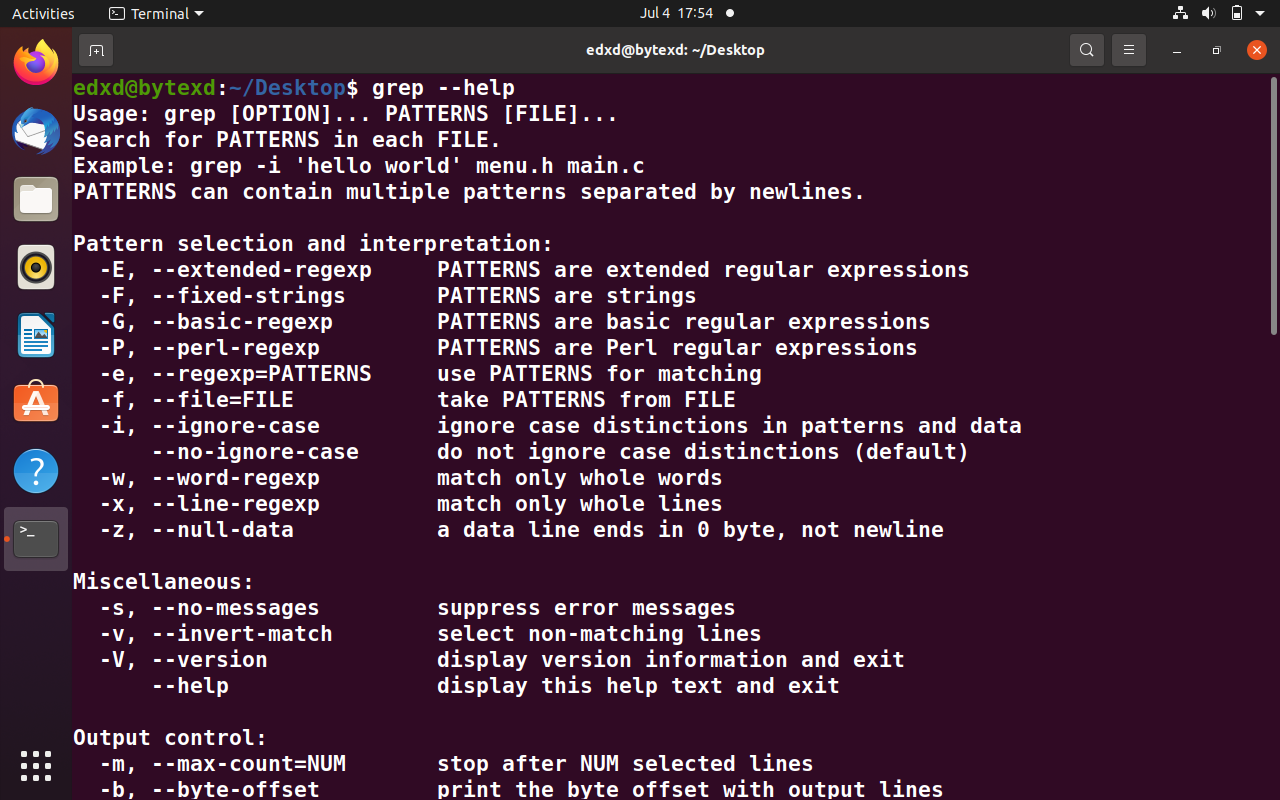

If we check the output above, we can see that “test/app/readme.md” is in the list, too. The following command will print the same output: $ grep -R -include=*. Test/log/app_20200301.log:DATETIME - SQLException has OccurredĪs we can see, the file test/app/readme.md appears in the output as well.Īlternatively, we can also use one single –include option and let the GLOB expression contain multiple extensions. Test/log/app_20200401.log:DATETIME - ClassCastException has Occurred Test/log/app.log:DATETIME - NullPointerException has Occurred Test/app/change_log.log:Fix the NullPointerException Problem when calling external APIs Test/app/readme.md: - Exceptions are well handled Now, let’s search for the word “Exception” on *.log and *.md files: $ grep -R -include=*.log -include=*.md 'Exception' test –include=*.log is an example of the –include=GLOB option, which tells grep to only search files whose basename matches the given GLOB expressionĪlso, we can use multiple –include=GLOB options to ask the grep command to search on files that match multiple extensions.In the current example, you will know that the word through which we have searched is highlighted to show its existence in the file. This command shows not only the filename but also the data present in it. You can use what’s known as a recursive search to cover entire directories, subdirectories. A file in Linux can be searched through a word. That is, it’s going to search the given pattern in files in any subdirectory under test Grep can do much more than just search the contents of a specific file. With option -o, only the matched pattern is printed line by line. o (-only-matching) - print only the matched patternīy default, grep prints the line where the matched pattern is found. With the option -w, grep ensures that the matches are exactly the same pattern as specified. This means that grep yo grep.txt will print the same results as grep yo grep.txt because 'yo' can be found in you. Pipes help you mash-up two or more commands at the same time and run them consecutively. In short, the output of each process directly as input to the next one like a pipeline. `-w` (-word-regexp) - print matches of the whole wordīy default, grep matches strings which contain the specified pattern. The Pipe is a command in Linux that lets you use two or more commands such that output of one command serves as input to the next. # all files in the current directory that matches The grep command is handy when searching through large log files. When it finds a match, it prints the line with the result.

The text search pattern is called a regular expression. May 21, 2022Knowledge grep options expression filename Syntax : grep string file Syntax : grep string /path/to/ Syntax : grep -color string. l (-files-with-matches) - print file names that match a pattern # command 1 Grep is a Linux / Unix command-line tool used to search for a string of characters in a specified file. i (-ignore-case) - used for case insensitivity # command 1ĥ. Typically PATTERNS should be quoted when grep is used in a shell command. Let's look at nine of them while applying them to the example above.ĪDVERTISEMENT 4. PATTERNS is one or more patterns separated by newline characters, and grep prints each line that matches a pattern. You is expected to have a different color than the other text to easily identify what was searched for.īut grep comes with more options which help us achieve more during a search operation. The result for this is: Hello, how are you The following grep command will search for all occurences of the word 'you': grep you grep.txt History: grep comes from the ed command to print all lines matching a certain pattern g/re/p where. If there is no match, no output will be printed to the terminal.įor example, say we have the following files (called grep.txt): Hello, how are you grep stands for global regular expression match and its common command available in most of Unix platform including Linux and Solaris. Grep stands for: Global Regular Expression Print. The result of this is the occurences of the pattern (by the line it is found) in the file(s). Description : Grep searches the named input FILEs (or standard input if no. You can also use the wildcard (*) to select all files in a directory. This tutorial explains Linux grep command, options and its usage with examples. Note that single or double quotes are required around the text if it is more than one word. Without passing any option, grep can be used to search for a pattern in a file or group of files.
#Grep command linux how to
In this article, we'll look at how to use grep with the options available as well as basic regular expressions to search files. Grep comes with a lot of options which allow us to perform various search-related actions on files.

It is a command line tool used in UNIX and Linux systems to search a specified pattern in a file or group of files. Grep stands for Globally Search For Regular Expression and Print out.


 0 kommentar(er)
0 kommentar(er)
